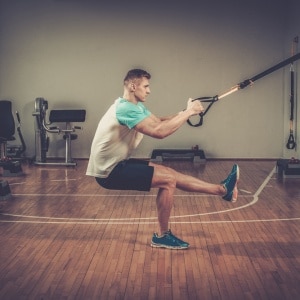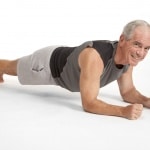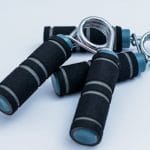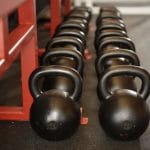 October 2023
October 2023
The Weakening of Menopause: Another Insult
Sarcopenia is the loss of lean muscle mass (LMM) that takes place as we age even if you do muscle-building exercises. Women are more apt to suffer the long-term effects of sarcopenia after menopause: reduced metabolism, greater risk of LMM-associated disability such as bone loss, fractures, more fat accumulation, and cardiometabolic decline. Studies have shown that this loss of LMM starts in perimenopause, the long, slow phase of estrogen decline. It’s not only atrophy; there’s also a loss of muscle quality (MQ). A multi-center study aimed to characterize these changes over the span of menopause from pre- to peri- and into menopause itself.
Strength, size, MQ, total, and leg LMM were determined in a cross-section of women – PRE-, PERI- and POST- menopause – matched for levels of weekly physical activity. Whole body and leg LMM were determined by DEXA; ultrasound quantified MQ of the quadriceps. Max isometric quadriceps strength was measured as was protein turnover, one marker of muscle maintenance. 
Results showed PRE>PERI and POST in total LMM but there was no significant difference between PERI and POST. Muscle sizes were similar across all groups but MQ was greater in PRE than PERI and POST. Protein turnover was similar for PRE and PERI with no big difference between PERI and POST; however, there was a significant decrease between PRE and POST.
These data show that “total body [LMM and MQ] are negatively influenced by the menopause transition” and the transition from PRE to PERI is the most critical time point when these changes occur.
It was concluded that “perimenopause seems to be a critical time for exercise and nutrition interventions targeting maintenance of total body [LMM]” – with weight lifting!
MSSE July 2023
How to Minimize Strength Loss When Injured
After an injury, several mechanisms take place that lead to the loss of muscle mass and strength around the injured body part. It has been long recognized that a cross-over effect occurs simply by doing strength exercises in the healthy limb, vigorously, to provide some neurological stimulation to the injured one. But which type of exercise is best: concentric (CON: or muscle shortening) or eccentric (ECC: muscle lengthening) contractions? A multi-national study tested the hypothesis that ECC would stimulate more protective benefits in an immobilized limb than would CON.
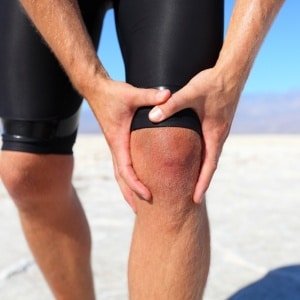
Both training groups showed increased strength and size of the non-immobilized limb biceps with the ECC even showing greater changes in triceps strength somehow. Negative or adverse changes in the muscles were less in the ECC than in the CON or the control groups while positive changes were only greater in the ECC than the CON. As expected, CON didn’t cause as much muscle soreness as ECC though the latter adapted readily over the course of the training cycle.
In other words, real heavy eccentric training of the uninjured limb might be the way to help the injured one keep both muscle mass and quality during the recovery and rehab phases.
MSSE July 2023
Tid Bits
In a study aimed at determining the effect of heavy weight lifting on the pelvic floor muscles (PVM), researchers tested 47 healthy, experienced weight-training women in 2 conditions: an hour of heavy squat and deadlift weightlifting and a control session while measuring intra-vaginal pressures. They found that heavy lifting is well-tolerated in strength-trained young (repeat, young) women, and is not ‘statistically’ different from resting conditions. MSSE Aug. 2023
Patellofemoral pain syndrome and tendinopathy are among the most prevalent running injuries. Belgian researchers did an analysis of patellofemoral joint and tendon forces during 3 runs: habitual, decreased, and increased step frequencies (SF). Peak joint and tendon forces (PF), rates of force development (RFD), and impulses/km of running were measured with SF adjusted at faster or slower paces. As speed increased, PF and RFD increased while peak impulse decreased. At lower speeds, SF might effect lower impulse/km and can be altered by running with shorter, quicker steps. MSSE Sept. 2023
A large meta-analysis of studies from 1990-2023 looked at the best exercise interventions to reduce systolic (SBP: upper) and diastolic (DBP: lower) blood pressures. From 270 qualifiable studies with 15,827 subjects, some of whom were non-exercise controls, it found that aerobic training lowered SBP 2-7 mmHg, dynamic resistance training by 1.5-8 units, aerobic+strength by 3.5-8.5, high-intensity intervals by 4-12 units, and isometrics by 4-12 units. A special statistical analysis found the isometrics, especially, of all things, the wall sit, ranked highest for its capacity to help lower hypertension, not only for SBP but also for DBP. Combined aerobic+strength exercises ranked second. All this to say, you can’t get the optimal blood pressure reduction simply by walking; you gotta lift, too. Br J Sports Med, Jan. 2023

